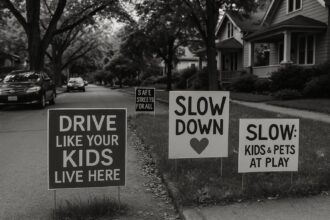Russian President Vladimir Putin is seeking a fifth term, amidst international concern over election integrity and escalating tensions with Ukraine. This situation is compounded by direct challenges from Russian groups fighting for Ukraine, and calls from Poland’s President for increased NATO defense spending.
Russian President Vladimir Putin is poised to seek a fifth term in office, amidst controversies regarding election manipulation and suppression of opposition voices. The state-controlled media and allegations of election fraud play significant roles in Putin’s continued dominance in Russian politics. This trend raises questions about the integrity of the democratic process in Russia, especially with the upcoming presidential election predicted to reaffirm Putin’s hold on power.
In a related development, groups of Russian citizens fighting for Ukraine, namely the Freedom of Russia Legion and the Siberian Battalion, have claimed to have crossed into the western part of Russia. This move signals a direct challenge to Putin’s regime. Ukrainian military intelligence has indicated that these actions are independent of Kyiv’s command, despite Russian accusations. Concurrently, the Russian Volunteer Corps released footage of an operation in Russia’s Belgorod region, which has been denied by Russia’s Federal Security Service. These events have unfolded against the backdrop of drone attacks on Russian infrastructures, highlighting the ongoing conflict’s complexities.
Amidst the escalating situation, Ukraine is bracing for a potential “worst-case scenario” in the war with Russia, which includes fears of a rapid conclusion in favor of Russia by June. This anticipation is fueled by warnings from the Ukrainian Intelligence Committee about possible Russian advancements and internal protests against conscription in Ukraine. Notably, there is concern over a potential Russian strategy to stir unrest against President Zelensky, referred to as “Maidan 3”.
In reaction to the growing tensions, Poland’s President Andrzej Duda has urged NATO allies to escalate their defense spending to three percent of their GDP, facing the increased Russian aggression in Ukraine. This call emphasizes the necessity for NATO members to enhance their military preparedness and support Ukraine. Currently, Poland exceeds the suggested defense spending target, dedicating four percent of its GDP, compared to the 2014 NATO agreement of two percent, highlighting the varied commitment levels among NATO countries.
These series of events illustrate the ongoing challenges and strategic maneuvers in the geopolitical landscape involving Russia, Ukraine, and NATO members, reflecting the deepening crisis and its broad implications for European security and the principles of democracy.













